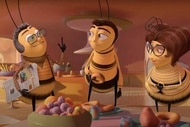Create a free profile to get unlimited access to exclusive videos, sweepstakes, and more!
Here's how atomic age nukes can sniff out counterfeit Scotch whiskey

Sippers of fine aged spirits around the world might want to think twice about paying too much cash for vintage whiskeys that claim to have been distilled and bottled long ago, thanks to a clever new method of detection using nuclear fallout as an accurate measuring device to unmask the impostors.
With examples of rare, collector-grade, singe-malt Scotch whiskey going for thousands of dollars (or much more!) at elite auctions and sponsored sales around the world, that monster bid you just delivered might be a wasted opportunity. To combat the fraud that could be more widespread than ever imagined, researchers at the Radiocarbon Lab at the Scottish Universities Environmental Research Centre (SUERC) in Glasgow, Scotland, have devised a method of detection using carbon-14 to correctly determine the actual age of that golden elixir prized by collectors and aficionados.
In a study recently published in Cambridge University's Cambridge Core online journal, radioactive fallout from nuclear bomb testing conducted during the '50s and '60s can assist experts in exposing counterfeit antique whiskey.
Thermonuclear weapons detonated decades ago unleashed the radioactive isotope carbon-14 into Earth's atmosphere, where it was absorbed into plants and living organisms, then started to decay following the organisms' demise. Damning traces of this leftover carbon-14 can be detected in the signature barley harvested and distilled to create whiskey.
According to the paper, auction sales of rare, single malt Scotch have exploded in the past decade, with over 100,000 bottles sold in 2018 alone and accounting for a net worth of nearly $49 million.
While infrared spectroscopy and chemical analysis can often call out genuine whiskeys from posers by comparing alcohol composition and volatile compounds, those techniques are ineffective in validating a whiskey's age.
"This massively increasing interest in the purchase of these rare products as investments has resulted in an accompanying increase in the production of fraudulent products that are difficult to detect," the researchers explained. "Our experiences have suggested that there are a significant number of fake products being sold."
Since carbon-14 decays at a constant rate, scientists can determine the batch's true birthday by calculating the remaining amount of radioactive isotope and verifying that the amber-colored spirit was produced before or after the start of the nuclear age, thus acting as an effective tool to verify the label's date.
Understanding that precisely dating whiskey based on traces of carbon-14 might be difficult due to the fact that harvested barley could be stored for years prior to being provided to a distillery, researchers adjusted their dating formula by creating a calibration curve that takes into consideration carbon-14 data from whiskeys with correct distillation years from 1950 to 2015. This lets whiskey distilled from 1955 to 2015 to have its birth year determined to within 1–3 years.
The results of the researchers' analysis were somewhat shocking! Testing coveted whiskeys created from 1847 to 1978, they discovered nearly half the bottles were younger than they were advertised. A bottle of Talisker with an 1863 label was found to have been distilled between 2007 and 2014. Another bottle of 1964 Ardbeg was revealed to have been made after 1995.
So better check that ultra-rare vintage you just sold the farm for, it just might be a liquid changeling!





























